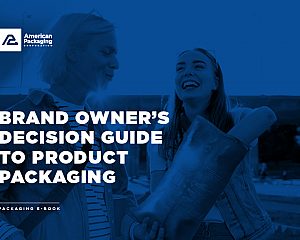Company News
The latest updates from our organization
How the Global Pandemic has Changed Packaging Engineering Priorities
Keeping Your Chips from Smelling Like Laundry Detergent is Now Something to Think About
Consumers are adjusting how they shop for and enjoy their favorite snacks, and these changes have introduced a new set of packaging priorities for brands to consider. More people are shopping online today and fewer are gathering in groups where they share a snacking moment or taking a lunch to work or school. These changes have impacts that need to be considered in a robust packaging agenda.
Food packaging comes in many shapes and sizes. For consumers, packaging makes a brand easily identifiable and allows them to grab their favorite snacks or household items right off the store shelf or online storefront. For packaging engineers and designers, much more goes into the science of efficient packaging design than the brand seal, and science is particularly important when designing for online shoppers. The distribution chain is a mystery, and engineers need to prepare for the unknown.
This behind-the-scenes preparation is critically important: Not only must the package be eye-catching to consumers, but it must also maintain the product’s integrity. The latter can be tricky, but it also must be evaluated for all types of products.
Let’s take items like laundry detergent and a bag of chips. They typically don’t mix, but what if they wind up side-by-side in a shipment or shopping bag? Could the laundry detergent smash the chips? Will the chips take on the taste or odor of the laundry detergent? These are factors to consider when designing and engineering a product’s package. These challenges present a much greater risk for brands when considering the situations introduced with online grocery distribution.
Let’s take a deeper dive into three critical factors to consider in product packaging design:
1. Mixed distribution prioritizes odor barriers. The better the barrier, the greater the shelf life and the higher the consumer satisfaction ratings. Keeping odors out and freshness in is critical. One method commonly used to characterize odor barrier is oxygen transmission. Every package must have the appropriate oxygen transmission barrier to maintain product integrity for the consumer. In addition to protecting odors from entering the package, keeping oxygen out helps protect against rancidity.
Moisture barrier is another common way to protect food products during storage. Moisture loss or gain can affect the quality and crispiness of the chips. A properly designed package will include these and other barrier factors. This can be accomplished by using a mixture of materials to include films, foils, metalizations and polymers that deliver the right combination of properties.
Brands historically default to the best barrier available dependent on cost, package design attributes and historical performance. Brand design considerations today might include showing off the product through a window using transparent barrier films instead of foils and metalizations. They may also include post-consumer resins to create a more circular economy for plastics or be focused on designing packaging that can be recycled. These opportunities can be addressed in conversations with converters, packaging engineers and supply chain professionals.
2. Breakage and damage protection. Chips won’t be the same if they’re broken, and leaking laundry detergent will spoil the entire bag or shipment. Pinpointing the supply chain risks along with proper materials, package geometry and protective measures will better support product integrity and hygiene.
What role does the distribution chain play in package design? A more significant one than you may think. Brand owners must ask: What does distribution look like? Will the product be transported by land or air? Food packaging, in particular, isn’t always made for elevated trips because of the air pressure and would require extra protection measures if that was the case.
Air shipping conditions typically pressurize to about 10,000 feet. This is consistent with “over the Rockies” standards. Special pressure tests are performed to ensure the seal integrity and package are optimized for these conditions.
Geometry in the package style, like the “quad-seal” package style, can help avoid some breakage. Having rigid side seals and gussets can provide stability and cut down on product crushing during distribution. The package shape is very situation dependent, but geometric style should be considered as an option to design stability into a package.
Production conditions can also play an important part. Optimal and consistent maintenance of the sealing process on the packaging lines is critically important in these situations, and the packaging barrier is highly dependent on the seals made on line. Designing a package with a premium caulking seal can also help subsidize equipment variance.
3. Package size and priorities. Reducing package/portion size is something many brands are aiming to do to avoid the excess use of materials and boost sustainability initiatives. COVID-19 has thrown a bit of a wrench into this element, especially for food and snack items, because there is much less emphasis on sharing today versus six months ago. While many states had created legislation to remove single-use plastics, many others have reversed that legislation as consumers adjust to changing health and safety protocols amid the pandemic. Now, there’s more of a focus on individual or single-serve packaging to reduce the risk of germ spread.
Options to assist brands in sending a hygienic message might include a transparent package in a high-barrier film to make the product visible while also protecting the flavor and aroma. Some brands may choose a white package interior lining to send a message about a “hygienic” environment inside the bag. Others look at increasing the seal strength to send a message of a “locked” package that “seals in” freshness and “seals out” contaminates.
While it may be less of an emphasis at this point in time, the sustainability movement in product packaging will likely re-emerge as a priority once the adjustment to the pandemic is behind us. Brand owners have retained their goals to meet sustainability initiatives. However, the order of priorities shifted to meeting supply needs with a safe and hygienic product first. New solutions will incorporate sustainability goals with food safety and product integrity. This requires sound engineering principles and the support of subject-matter experts in a packaging converter partner.
In a post-pandemic world, we expect that brand owners will move forward with a better designed supply chain that leverages packaging technology and material science to meet all of the critical needs to deliver a delightful consumer experience with a package that will meet their sustainability goals. The supply chain has learned from the pandemic and the results will be a more robust and healthier packaging environment.
Written by: Louis Dolgin, Corporate Business Development Marketing Manager, American Packaging Corporation (APC)
APC is the go-to flexible packaging solutions partner for many of the world’s most well-known brands, and our team is standing by to make sure you receive the ideal flexible packaging to meet your requirements. Contact us at: https://americanpackaging.com/contact







